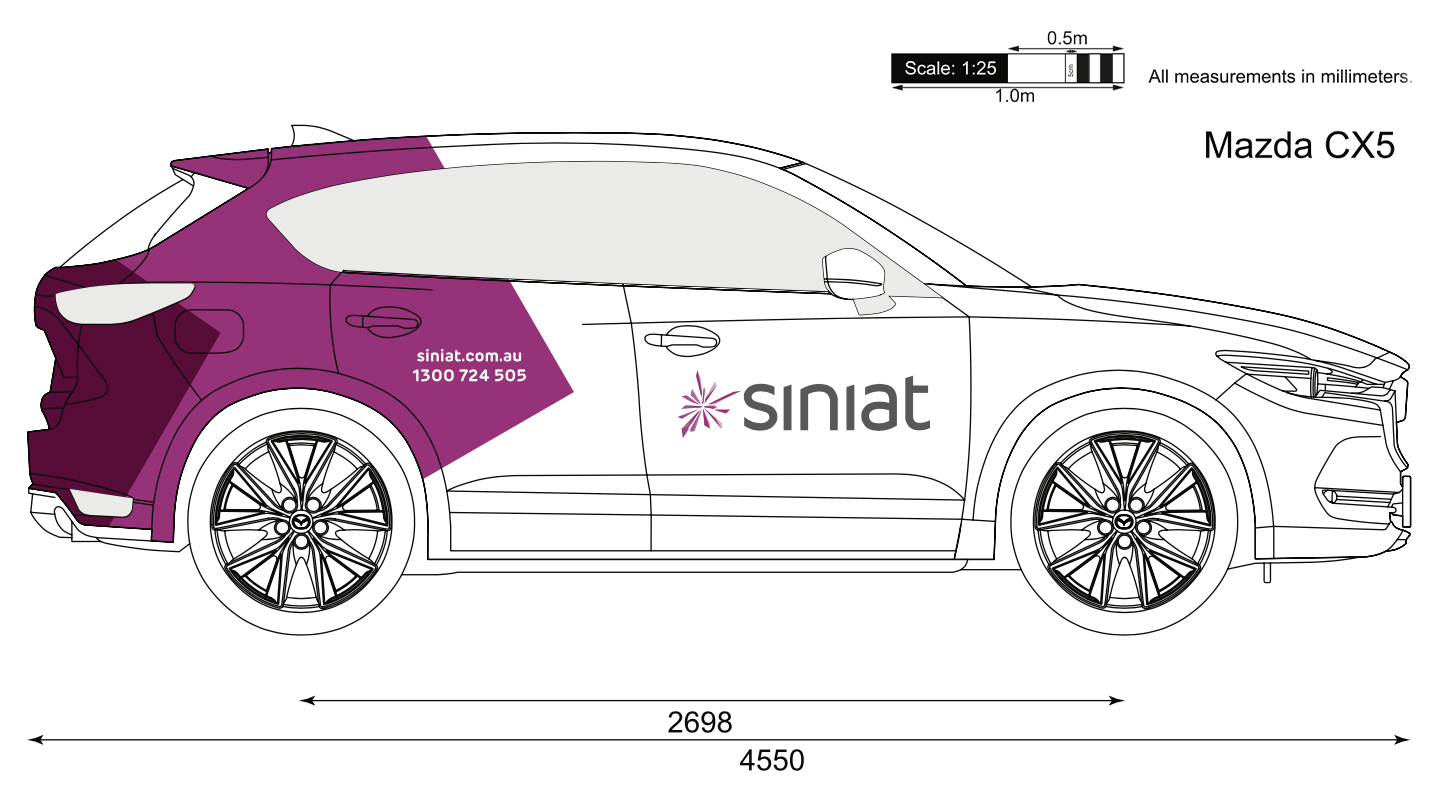Car Signage design

Compliment your business branding with car signage while capturing a greater audience on the road
Car signage design can be as simple as a window sticker, bumper sticker or a logo on a car door or as complex as a full vehicle wrap. The material used in a full vehicle wrap is vinyl adhesive which is gentle on car paint and easy to remove.
During the full scale brand roll-out of Siniat metal and plasterboard products to the Australian construction market, I was assigned a number of vehicle wraps including a Mazda CX-5, Volkswagen Amarok double cab ute, Toyota Hilux single cab ute, Triton Ute, Nissan Patrol 4WD, Toyota Landcruiser 4WD, Mitsubishi Fuso truck and a B-Double truck.
While each car and truck model varied in size and form, the design process remains the same.
Here are the simple steps to help you understand how to design car signage:
- Download a vector blue print of your car model online. I sourced most of my blueprints from www.the-blueprints.com
- Open the vector blue print in Adobe Illustrator
- The scale by default is usually 1:25 so you don’t have work at 100% scale
- Organise your illustrations in layers. The top layer contains windows, side mirrors and lights. The middle layer contains your signage design. The bottom layer contains the car framework – wheels, doors, bonnet, roof etc.
- Once the design is complete and approved by the client, convert all text to outlines and email to the signage printers. I usually provide two files; a legacy version of the illustrator file and a low res PDF for their reference.
- The printers may ask for specific colour values or pantone colours in order to find the closest matching vinyl colour.
If you need car signage designed for your business, please contact Kristina via LinkedIn